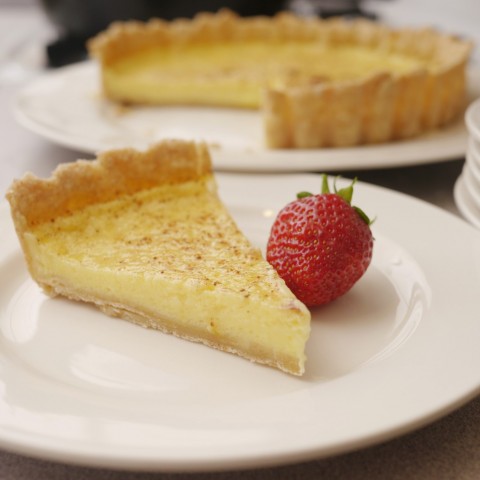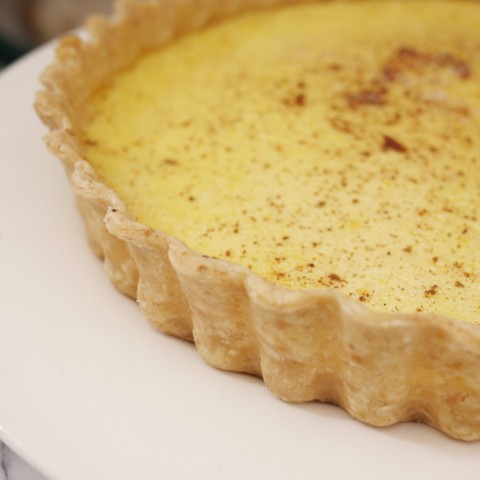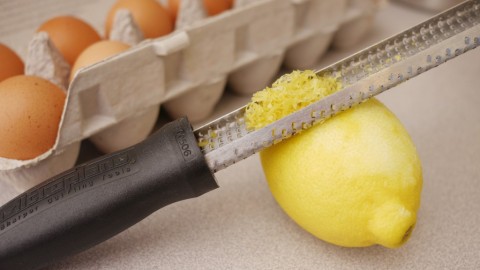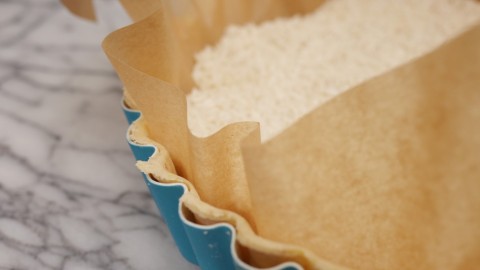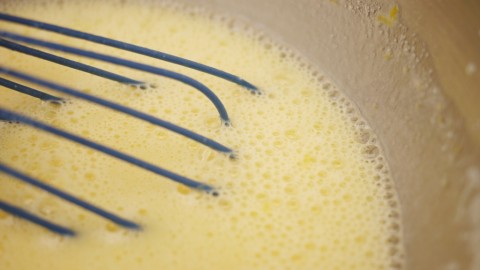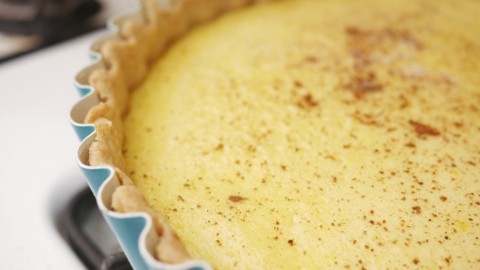For anyone who has had any contact with me over the last month, the idea of a lemon kefir tart shouldn’t come as a great surprise. I have, after all, spent that time all but obsessed with kefir, stashing mason jars of room-temperature milk all around the house, and watching gleefully as my grains — the live active culture — transform said milk into a thick, sweet, sour, sometimes slightly carbonated beverage.
What has set me down this path is a recent trip to New York, to visit Hana and her husband. Walking into their tiny Manhattan apartment, two things struck me almost at once: the happy, healthy, gigantic kombucha mother gurgling away in a jar on their counter, and the jar of kefir, just about done fermenting.
Now, I love commercial kefir, and for a long time, I had been wanting to try it at home. I had even bought some kefir grains from the Internet not too long before the trip to New York. But the reality of the spring — between the grading for three courses and the other work I’ve been doing — meant that I waited too long to immerse them in milk, and by the time I got around to it, the window had already closed.
After hemming and hawing about it for the better part of the visit, I finally asked Hana if I could have a sample of hers. And — much to my good fortune — her answer was yes.
So kefir: if you haven’t figured it out just yet, kefir is a fermented dairy product that’s a little bit like yogurt. But whereas yogurt is entirely a bacterial fermentation — whereas the process of making it involves inoculating milk with existing yogurt, then holding it at about a hundred degrees fahrenheit until the bulgaricus and the thermophilus do their thing — kefir involves a SCOBY.
SCOBY is an acronym that I always attribute to Sandor Katz. It stands for symbiotic colony of bacteria and yeast. And that’s what kefir grains are in a nutshell. They are a bunch of microbes of different sorts, all suspended in a matrix of proteins and fats that look like cottage cheese curds. And once you’ve added them to your milk, there’s no need to warm them, or anything like. Left at room temperature, and shaken occasionally for good measure, the grains will eat up most of the lactose and replace it with a combination of acids and alcohols that are much easier to digest if you — like me — sometimes find that dairy disagrees with you.
As it ferments, it smells like the best sourdough starter you’ve ever set your nose on. Which is a huge part of the charm from my perspective.
At any rate, the result of a month of frequent fermentation is that I have a lot of kefir on hand. And when I was planning a meal for a bunch of folks the other night, I thought: why not lets take advantage of that. So I made a batch of cheesy biscuits, using kefir instead of yogurt. And I made a large batch of kefir-soaked fried chicken (this may be another post). And — I made the lemon kefir tart.
I cannot recommend the lemon kefir tart highly enough. I was initially a little bit nervous making the thing for a house full of people. I couldn’t find any pre-existing kefir tart recipes that were particularly appealing. But sometimes improvised dessert just clicks. And that’s what happened here. The lemon kefir tart came out of the oven a little bit puffed up. And as it cooled, it settled into a thing that is, in flavor and texture, sort of what you’d imagine if a cheesecake and a custard tart had a child.
Sarah said it was like pumpkin pie, but instead of pumpkin, you have lemon.
It’s sweet and sharp and highly lemony — and it went great with the season’s first fresh strawberries.
And here’s how you make it.
Lemon Kefir Tart
The Filling:
1 cup Kefir (homemade if you can, commercial if you must)
1 cup Sugar
1 tbsp Unbleached AP Flour
4 Eggs
Zest of 1 Lemon
A pinch of Nutmeg and Allspice
The Crust:
1 Water-Based Pie Crust (see the Twice Cooked Guide to Shortcrust Pastry for instructions)
With the Zest of 1 Lemon added
Preheat your oven to 400F. Roll out your shortcrust and fit it to a ten-inch tart pan. Poke holes all over the bottom with a fork. Then put it in the freezer for about twenty minutes. This will help the gluten relax, and keep the crust from shrinking as it cooks.
At the end of that time, weigh down the crust and blind bake for 20 minutes, or until the topmost edges have just begun to brown.
To make the filling: turn your oven down to 350F. Add the flour, sugar, and lemon zest to a medium-sized work bowl, and whisk until they are mixed. Thoroughly whisk in the eggs, beating until they just begin to lighten. Then whisk in the kefir.
Pour the kefir mixture into the crust, and bake the whole thing for about 45 minutes, until the filling has mostly solidified and has gone a bit puffy.
Remove from the oven and allow your finished lemon kefir tart to cool. Dust the top with just a little bit of nutmeg and allspice, then remove the tart from its pan, plate it, and chill before serving.
A ten inch lemon kefir tart should make about eight pieces, and will be more than enough dessert for most gatherings, especially when accompanied by strawberries.
